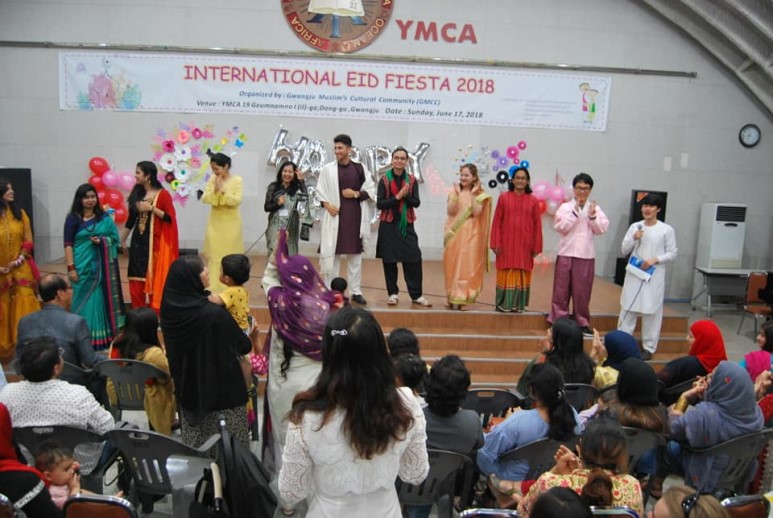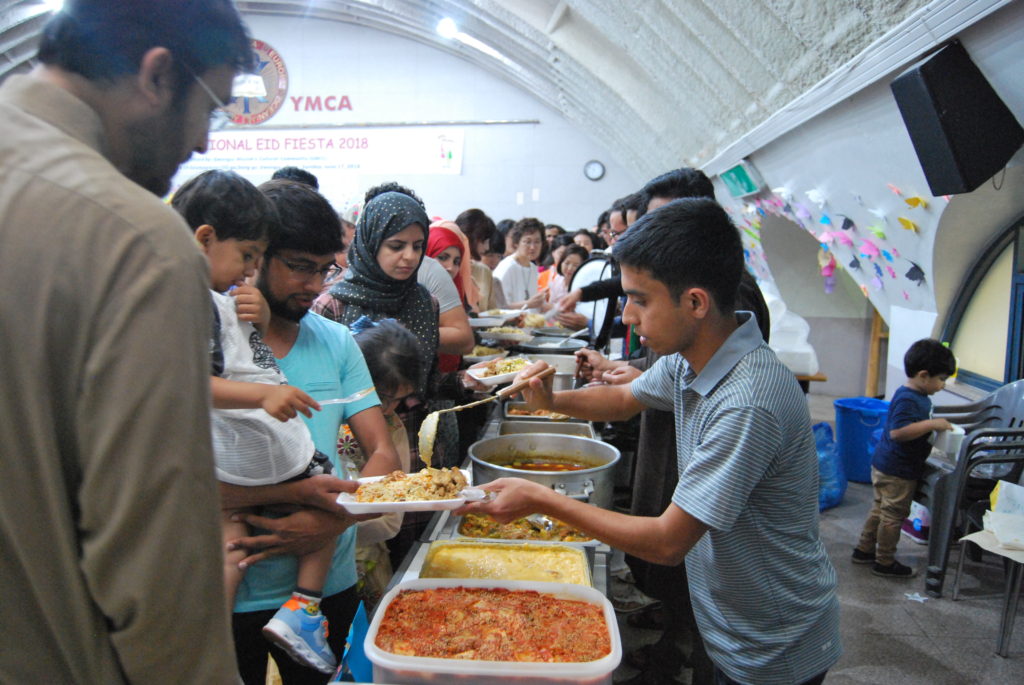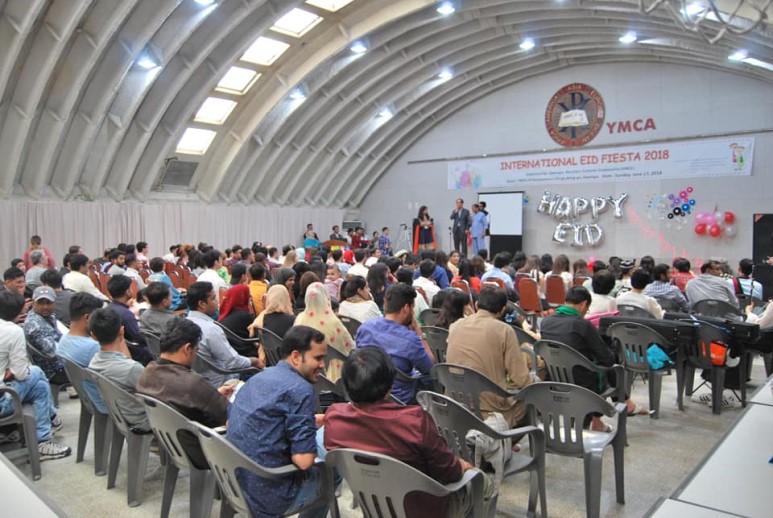My Exposure to Diversity at the Eid Mubarak International Fiesta
Written by Mazaher Akbari
Photographs courtesy of Gwangju Muslim Cultural Community
In theosophy, Eid is interpreted as being anything new, whether it is clothes, lifestyle, or thinking. During Eid, people make new clothes and visit their relatives. Greetings of “Eid Mubarak” are exchanged with Eid meaning “celebration,” and Mubarak meaning “blessed.” In Kabul, Afghanistan, where I am from, and in countries that celebrate this festival, children are given gifts or money by their parents and relatives. Rumi, a famous theosophist poet in Persian literature, wrote the poem below to describe the Eid celebration:
Like the sign of a reunion
In the palm of your hands,
May the sign of this Eid al-Fitr
Bring lots of joy and happiness to you all!
Eid celebrations are in abundance
Wherever you go these days.
If Eid is the sheer abundant joy
Then let it remain in total abundance!
It is very much appreciated that there are many local organizations that support the sharing of Gwangju’s various different cultures. Their support matters a great deal when it comes to enabling this diversity to be brought to the audiences attending these celebrations.
The Eid Mubarak International Fiesta organized by the Gwangju Muslim Cultural Community (GMCC) took place on June 17 at the Mujin Hall of the Chungjang-ro YMCA. Though it did not fall on the “official” day of Eid Al-Fitr, which was on June 15, the celebration was still a lively one, filled with interesting performances and food sharing. As one of the organizers, I was tasked with cooking the national dish of my country, kabuli palaw, as well as being in charge of the fashion show. On that very D-day morning, I woke up early at 7 a.m. to prepare the rice dish with my friends for the fiesta. Besides that, I also made the music videos for the fashion show, which were to be projected and used for the background. These last-minute tasks really made me anxious about getting everything done before the event started in the afternoon.
How these tasks ended up being so last-minute cannot be well explained without going back to how this all started. The idea was first suggested by a student from the Afghan community, but he could not participate much because the celebration conflicted with his examination period. Feeling sorry to let this idea go to waste, I decided to suggest it to Muslim communities from other countries. Fortunately, they agreed to participate in showcasing the traditional clothes of their countries. Eventually, my friend, Waziha Farha and I became responsible for the fashion show, which began with looking for models. Some were interested in going on stage but were worried about not being able to do well enough as models and so decided to pull out. As for some others, up until two days before the event, we only had their contacts and a promise to come – not their actual appearance to rehearse for the fashion show. As a result, both Waziha and I were in a constant search for models for the show.
From contacting people for the stage preparation to rehearsing and finalizing the script and videos, all had to be done within a two-week period. Luckily, in the end, all ten models were found and able to be in the show. We managed to get models from Afghanistan, Bangladesh, India, Korea, Malaysia, and Pakistan. Even on the event day itself, one model was changed at the last minute, while the Korean model had difficulty fitting into the hanbok (traditional Korean dress) that was prepared by others.

Ready or not, the time for the show arrived. As the music of each country started to play, the models went up one by one as previously rehearsed. People who had not rehearsed for the show just went up on stage and copied what others before them had done! As the audience watched the show full of excitement, I did the introduction for each costume when the models went up on stage. A sense of relief washed over me after seeing that the show was going well.
The fashion show, as part of the Eid Fiesta, not only reminded us about the celebration but also provided insights into how people in neighboring countries share similar traditional outfits. For instance, when looking at India, Pakistan, and Bangladesh, we see almost identical outfits with similar names. Salwar kameez is the name of a dress commonly worn in India, while a slightly differently named dressed called qameez shalwar is worn in Pakistan. Similarly, as we go further west all the way from Bangladesh to Afghanistan, the vest commonly known as waskat across this region maintains the same pronunciation in four different languages: Persian, Hindi, Urdu, and Bangla. On the other hand, the baju kurung worn by the Malaysian model stood out among the international items of clothing, suggesting a localized version of Muslim clothing has been created in that region.

This experience of participating in the event as an organizer has opened my eyes wider to the diversity of culture even just within the circle of Muslims in Gwangju. The event, which also saw Korean young adults participate by sampling the food prepared by members of each country, was a great start for promoting acceptance and understanding of foreign neighbors who practice different beliefs and lifestyles.
The Author
Hailing from Afghanistan, Mazaher Akbari has been a student at Gwangju’s Chonnam National University since April 2015. He is currently in his senior year studying business administration. He likes to meet new people and make new friends.







